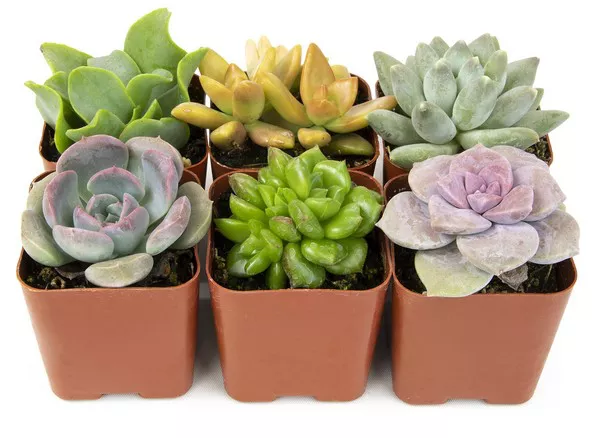Succulents, with their captivating shapes and striking foliage, have become increasingly popular in gardens and indoor plant collections. These hardy plants are known for their resilience, but how well do they handle cold temperatures?
Understanding Succulents and Their Cold Tolerance
Before we dive into the specifics of how cold succulents can endure, let’s first understand what makes succulents unique and why they are well-suited to handle adverse weather conditions.
Succulents: Succulents are a diverse group of plants that store water in their leaves, stems, or roots, giving them a fleshy, plump appearance. This water storage adaptation allows them to survive in arid and semi-arid regions with limited water availability.
Cold Tolerance Mechanisms: Succulents have evolved various mechanisms to cope with cold temperatures. Their ability to store water allows them to endure dry, chilly conditions, while other adaptations, such as protective waxy coatings, help reduce water loss.
Hardiness: Succulents exhibit a range of hardiness, which refers to a plant’s ability to survive cold temperatures. Some succulents are more cold-resistant than others, and their hardiness can vary by species and environmental factors.
Determining the Cold Tolerance of Specific Succulents
Succulents exhibit a wide range of cold tolerance, with some species thriving in frigid winter climates and others preferring milder temperatures. Understanding the specific cold tolerance of the succulents in your collection is essential for ensuring their well-being.
Hardy Succulents: Some succulent species, such as Sempervivum (Hens and Chicks) and Sedum, are exceptionally cold-tolerant and can withstand freezing temperatures. They often thrive in USDA hardiness zones 3 to 9, where winters can be harsh.
Tender Succulents: On the other end of the spectrum, tender succulents like Echeveria and Aeonium are more sensitive to cold and frost. These plants are typically suited for USDA zones 9 to 11, where temperatures remain mild year-round.
Cold Protection: Regardless of their cold tolerance, succulents can benefit from protection during severe cold snaps. Covering them with frost cloth or moving them indoors during extreme cold can help prevent damage.
Factors Influencing Cold Tolerance
The ability of succulents to tolerate cold temperatures is influenced by several key factors. Understanding these factors can help you create optimal conditions for your succulents, even in cooler climates.
Species and Variety: Different succulent species and varieties have varying levels of cold tolerance. Research the specific requirements of your succulents to provide them with the appropriate care.
Maturity: Mature succulents often handle cold better than younger plants. Their well-established root systems and thicker foliage provide better insulation against low temperatures.
Acclimation: Succulents that have been gradually exposed to colder temperatures are more likely to withstand cold snaps. Avoid abrupt temperature changes, especially during the fall when transitioning indoor plants outdoors.
Moisture Levels: Dry succulents are less susceptible to cold damage than those with excess moisture. Avoid overwatering before freezing temperatures are expected.
Container vs. Ground: Succulents planted in the ground benefit from the earth’s natural insulation, which can help them withstand colder temperatures compared to those in containers. Potted succulents may need extra protection.
Location: The microclimate of your garden or outdoor space plays a significant role in cold tolerance. Succulents planted near walls or buildings can benefit from radiated heat, which may help them endure colder temperatures.
Cold Protection Measures
To ensure the well-being of your succulents during cold weather, consider implementing these protective measures:
Indoor Relocation: If you live in a region with harsh winters, consider bringing your tender succulents indoors during the coldest months. Place them near a south-facing window to ensure they receive adequate light.
Frost Cloth: Covering your outdoor succulents with frost cloth or burlap can provide insulation and protect them from frost damage. Ensure the coverings do not touch the plants directly.
Mulching: Applying a layer of mulch around the base of outdoor succulents can help regulate soil temperature and protect the roots from freezing.
Heat Lamps or Candles: In extreme cold, you can use heat lamps or candles placed strategically around your succulents to provide additional warmth.
Watering: Avoid watering your succulents during freezing temperatures, as excess moisture can lead to freezing and damage. Water them sparingly when temperatures rise.
Cold-Hardy Varieties: If you live in a cold climate and want to cultivate succulents outdoors year-round, choose cold-hardy varieties that can withstand freezing temperatures.
Conclusion
Succulents are remarkably adaptable and can tolerate a range of temperatures, from extreme heat to cold. Understanding the cold tolerance of your succulents, along with the environmental factors that influence their well-being, is essential for their successful cultivation. By providing appropriate care and protection during cold spells, you can enjoy the beauty and resilience of succulents in a variety of climates. Whether you’re an indoor gardener or tending to a desert-inspired landscape, succulents can thrive and bring a touch of natural elegance to your surroundings, even in cooler temperatures.


